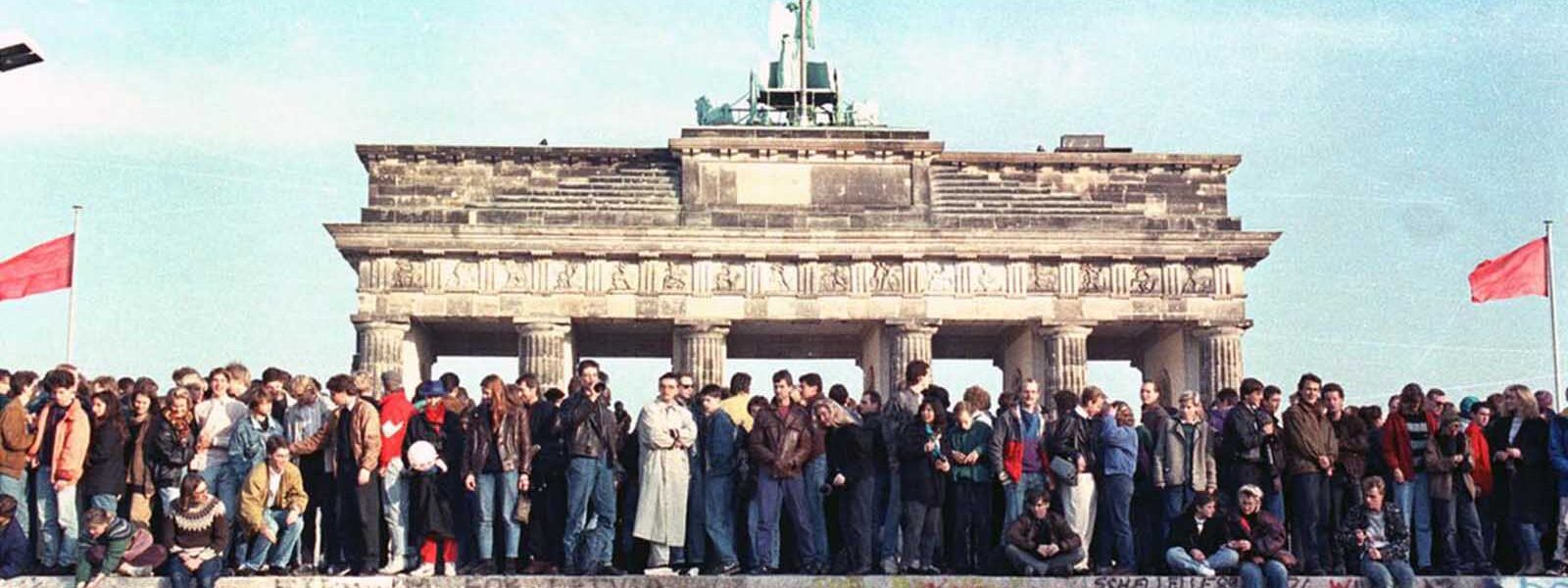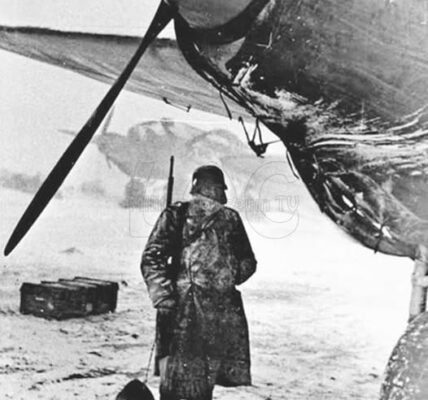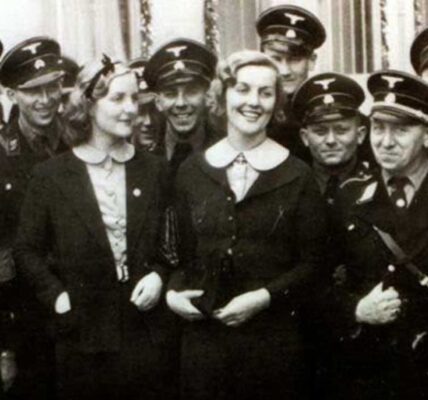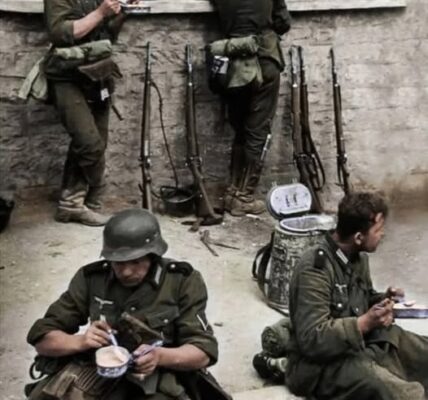RHP 18-23 Minuten 07.10.2017

West-Berliner Bürger halten am 10. November 1989, einen Tag nachdem die ostdeutsche Regierung die Grenze zwischen Ost- und West-Berlin geöffnet hatte, eine Mahnwache auf der Berliner Mauer vor dem Brandenburger Tor ab.
Die Berliner Mauer wurde am 13. August 1961 mitten in der Nacht errichtet und war eine physische Trennung zwischen Westberlin und Ostdeutschland. Ihr Zweck war es, unzufriedene Ostdeutsche von der Flucht in den Westen abzuhalten.
Als die Berliner Mauer am 9. November 1989 fiel, erfolgte ihre Zerstörung fast ebenso augenblicklich wie ihre Errichtung.
28 Jahre lang war die Berliner Mauer ein Symbol des Kalten Krieges und des Eisernen Vorhangs zwischen dem sowjetisch geführten Kommunismus und den Demokratien des Westens. Als sie fiel, wurde sie auf der ganzen Welt gefeiert.

Am 13. August 1961 schloss die DDR ihre Grenzen zum Westen. Hier errichten ostdeutsche Soldaten Stacheldrahtbarrikaden an der Grenze zwischen Ost- und Westberlin. Westberliner Bürger schauen zu.
Am Ende des Zweiten Weltkriegs teilten die Alliierten das eroberte Deutschland in vier Zonen auf. Wie auf der Potsdamer Konferenz vereinbart, wurde jede Zone entweder von den Vereinigten Staaten, Großbritannien, Frankreich oder der Sowjetunion besetzt.
Dasselbe geschah mit der deutschen Hauptstadt Berlin. Die Beziehungen zwischen der Sowjetunion und den anderen drei alliierten Mächten zerbrachen rasch.
Infolgedessen verwandelte sich die kooperative Atmosphäre der deutschen Besatzung in Konkurrenzkampf und Aggressivität. Einer der bekanntesten Vorfälle war die Blockade Berlins im Juni 1948, bei der die Sowjetunion sämtliche Lieferungen nach Westberlin stoppte.

Ein junger Ostberliner errichtet am 18. August 1961 an einer Sektorengrenze in der geteilten Stadt eine Betonmauer, die später mit Stacheldraht versehen wurde. Im Hintergrund steht die ostdeutsche Polizei Wache, während ein anderer Arbeiter Zement mischt.
Obwohl letztlich eine deutsche Wiedervereinigung angestrebt wurde, kam es aufgrund der neuen Beziehungen zwischen den alliierten Mächten zu einem Konflikt zwischen West und Ost sowie zwischen Demokratie und Kommunismus.
Im Jahr 1949 wurde diese neue Organisation Deutschlands offiziell, als sich die drei von den Vereinigten Staaten, Großbritannien und Frankreich besetzten Zonen zur Gründung Westdeutschlands (der Bundesrepublik Deutschland oder BRD) zusammenschlossen.
In der von der Sowjetunion besetzten Zone entstand rasch die DDR (Deutsche Demokratische Republik).
Dieselbe Teilung in West und Ost gab es auch in Berlin. Da die Stadt Berlin vollständig in der sowjetischen Besatzungszone lag, wurde West-Berlin zu einer Insel der Demokratie innerhalb der kommunistischen DDR.

Tracks of the Berlin elevated railroad stop at the border of American sector of Berlin in this air view on August 26, 1961. Beyond the fence, communist-ruled East Berlin side, the tracks have been removed.
Within a short period of time after the war, living conditions in West Germany and East Germany became distinctly different. With the help and support of its occupying powers, West Germany set up a capitalist society.
The economy experienced such rapid growth that it became known as the “economic miracle”.
With hard work, individuals living in West Germany were able to live well, buy gadgets and appliances, and travel as they wished.
Nearly the opposite was true in East Germany. The Soviet Union had viewed their zone as a spoil of war.
They had pilfered factory equipment and other valuable assets from their zone and shipped them back to the Soviet Union.

Formidable concrete walls took shape at the seven crossing points between East and West Berlin on December 4, 1961. The new walls were seven feet high and five feet thick. Only small passages for traffic were left open. In center of the Bornholmer Bridge (French/Russian sector border), behind steel tank traps, a big sign showing the East German emblem hammer and compass.
When East Germany became its own country in 1949, it was under the direct influence of the Soviet Union, and a Communist society was established. The economy of East Germany dragged and individual freedoms were severely restricted.
Outside of Berlin, East Germany had been fortified in 1952. By the late 1950s, many people living in East Germany wanted out.
No longer able to stand the repressive living conditions, they would head to West Berlin. Although some of them would be stopped on their way, hundreds of thousands made it across the border.
Once across, these refugees were housed in warehouses and then flown to West Germany.
Many of those who escaped were young, trained professionals. By the early 1960s, East Germany was rapidly losing both its labor force and its population.

East German VOPO, a quasi-military border policeman using binoculars, standing guard on one of the bridges linking East and West Berlin, in 1961.
Between 1949 and 1961, it’s estimated that nearly 2.7 million people fled East Germany. The government was desperate to stop this mass exodus.
The obvious leak was the easy access East Germans had to West Berlin. With the support of the Soviet Union, there had been several attempts to simply take over West Berlin.
Although the Soviet Union even threatened the United States with the use of nuclear weapons over this issue, the United States and other Western countries were committed to defending West Berlin.

Under the eye of a communist “people’s policeman”, East Berlin workers with a power shovel destroy one of a number of cottages and one-family houses along a sparsely settled stretch of the east-west Berlin boundary in October of 1961.
Desperate to keep its citizens, East Germany knew that something needed to be done.
Famously, two months before the Berlin Wall appeared, Walter Ulbricht, Head of the State Council of the GDR (1960–1973) said, “Niemand hat die Absicht, eine Mauer zu errichten”. These iconic words mean, “No one intended to build a wall”.
After this statement, the exodus of East Germans only increased. Over those next two months of 1961, nearly 20,000 people fled to the West.
Rumors had spread that something might happen to tighten the border of East and West Berlin. No one was expecting the speed—nor the absoluteness—of the Berlin Wall.
Just past midnight on the night of August 12–13, 1961, trucks with soldiers and construction workers rumbled through East Berlin.

A young girl in the Eastern Sector looks through barbed wire into Steinstucken, Berlin, in October of 1961.
While most Berliners were sleeping, these crews began tearing up streets that entered into West Berlin.
They dug holes to put up concrete posts and strung barbed wire all across the border between East and West Berlin. Telephone wires between East and West Berlin were also cut and railroad lines were blocked.
Berliners were shocked when they woke up that morning. What had once been a very fluid border was now rigid. No longer could East Berliners cross the border for operas, plays, soccer games, or any other activity.
No longer could the approximately 60,000 commuters head to West Berlin for well-paying jobs. No longer could families, friends, and lovers cross the border to meet their loved ones.
Whichever side of the border one went to sleep on during the night of August 12, they were stuck on that side for decades.

Blocking the church – Two East Germans work on a huge 15 foot wall, placing pieces of broken glass on the top to prevent East Berliners from escaping.
The total length of the Berlin Wall was 91 miles (155 kilometers). It ran not only through the center of Berlin, but also wrapped around West Berlin, entirely cutting it off from the rest of East Germany.
The wall itself went through four major transformations during its 28-year history. It started out as a barbed-wire fence with concrete posts.
Just days later, on August 15, it was quickly replaced with a sturdier, more permanent structure. This one was made out of concrete blocks and topped with barbed wire.
The first two versions of the wall were replaced by the third version in 1965. This consisted of a concrete wall supported by steel girders.
The fourth version of the Berlin Wall, constructed from 1975 to 1980, was the most complicated and thorough.
It consisted of concrete slabs reaching nearly 12-feet high (3.6 meters) and 4-feet wide (1.2 meters). It also had a smooth pipe running across the top to hinder people from scaling it.
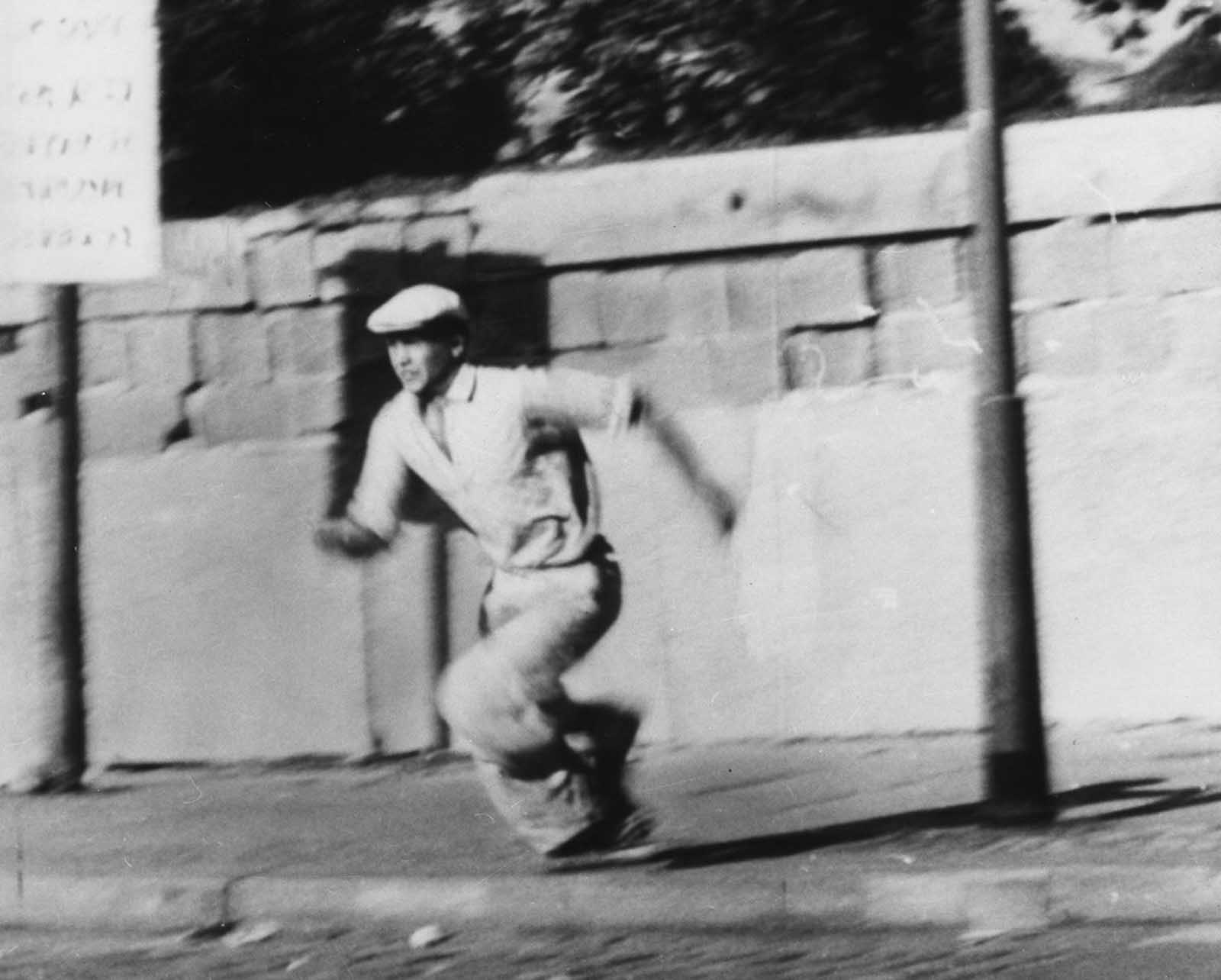
A refugee runs during an attempt to escape from the East German part of Berlin to West Berlin by climbing over the Berlin Wall on October 16, 1961.
The fall of the Berlin Wall happened nearly as suddenly as its rise. There had been signs that the Communist bloc was weakening, but the East German Communist leaders insisted that East Germany just needed a moderate change rather than a drastic revolution. East German citizens did not agree.
Russian leader Mikhail Gorbachev (1985–1991) was attempting to save his country and decided to break off from many of its satellites. As Communism began to falter in Poland, Hungary, and Czechoslovakia in 1988 and 1989, new exodus points were opened to East Germans who wanted to flee to the West.
In East Germany, protests against the government were countered by threats of violence from its leader, Erich Honecker. In October 1989, Honecker was forced to resign after losing support from Gorbachev.
He was replaced by Egon Krenz who decided that violence was not going to solve the country’s problems. Krenz also loosened travel restrictions from East Germany.

Picture taken in June 1968 of the Berlin Wall and East Berlin (Soviet sector).
By the time the Berlin Wall fell in 1989, there was a 300-foot No Man’s Land and an additional inner wall. Soldiers patrolled with dogs and a raked ground showed footprints.
The East Germans also installed anti-vehicle trenches, electric fences, massive light systems, 302 watchtowers, 20 bunkers, and even minefields.
Over the years, propaganda from the East German government would say that the people of East Germany welcomed the Wall.
In reality, the oppression they suffered and the potential consequences they faced kept many from speaking out to the contrary.

Typical of East Berlin measures to halt the escape of refugees to the west are these bricked-up windows in an apartment house along the city’s dividing line October 6, 1961. The house, on the South side of Bernauerstrasse, is in East Berlin.
Although most of the border between East and West consisted of layers of preventative measures, there were little more than a handful of official openings along the Berlin Wall.
These checkpoints were for the infrequent use of officials and others with special permission to cross the border.
The most famous of these was Checkpoint Charlie, located on the border between East and West Berlin at Friedrichstrasse. Checkpoint Charlie was the main access point for Allied personnel and Westerners to cross the border.
Soon after the Berlin Wall was built, Checkpoint Charlie became an icon of the Cold War. It has frequently been featured in movies and books set during this time period.

Aerial view of Berlin border wall, seen in this 1978 picture.
The Berlin Wall did prevent the majority of East Germans from emigrating to the West, but it did not deter everyone.
During the history of the Berlin Wall, it is estimated that about 5,000 people made it safely across. Some early successful attempts were simple, like throwing a rope over the Berlin Wall and climbing up.
Others were brash, like ramming a truck or bus into the Berlin Wall and making a run for it.
Still, others were suicidal as some people jumped from the upper-story windows of apartment buildings that bordered the Berlin Wall.

East German border guards carry away a refugee who was wounded by East German machine gun fire as he dashed through communist border installations toward the Berlin Wall in 1971.
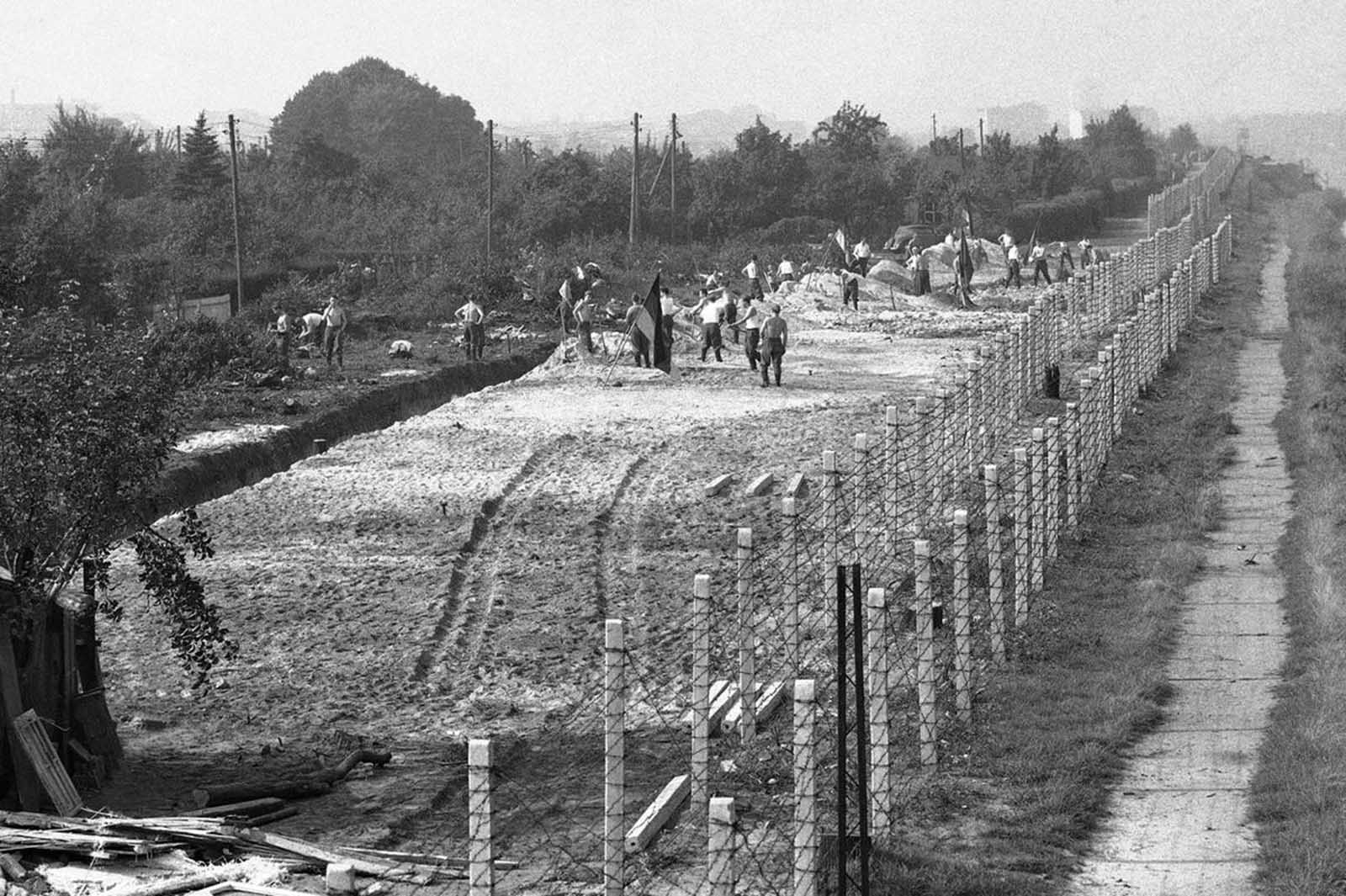
East Berlin laborers work on “Death Strip” which communist authorities created on their side of the border in the divided city on October 1, 1961. A double barbed wire fence marks the border, with West Berlin at right. In this view of the area laborers level rubble of houses which, just days before, stood on the site close to the border. Buildings along the 25-mile dividing line were evacuated and razed by Berlin reds to eliminate one means of escape used by East Berliners to jump to the west.
In September 1961, the windows of these buildings were boarded up and the sewers connecting East and West were shut off.
Other buildings were torn down to clear space for what would become known as the Todeslinie, the “Death Line” or “Death Strip.”
This open area allowed a direct line of fire so East German soldiers could carry out Shiessbefehl, a 1960 order that they were to shoot anyone trying escape.
Twenty-nine people were killed within the first year. As the Berlin Wall became stronger and larger, the escape attempts became more elaborately planned.

Dying Peter Fechter is carried away by East German border guards who shot him down when he tried to flee to the west in this August 17, 1962 photo. Fechter was lying 50 minutes in no-man’s land before he was taken to a hospital where he died shortly after arrival.
Some people dug tunnels from the basements of buildings in East Berlin, under the Berlin Wall, and into West Berlin. Another group saved scraps of cloth and built a hot air balloon and flew over the Wall.
Unfortunately, not all escape attempts were successful. Since the East German guards were allowed to shoot anyone nearing the eastern side without warning, there was always a chance of death in any and all escape plots.
It is estimated that somewhere between 192 and 239 people died at the Berlin Wall.

View from top of the old Reichstag building of the Brandenburg Gate, which marks the border in this divided city. The semi-circled wall around the Brandenburg Gate was erected by East German Vopos on November 19, 1961.
One of the most infamous cases of a failed attempt occurred on August 17, 1962. In the early afternoon, two 18-year-old men ran toward the Wall with the intention of scaling it.
The first of the young men to reach it was successful. The second one, Peter Fechter, was not.
As he was about to scale the Wall, a border guard opened fire. Fechter continued to climb but ran out of energy just as he reached the top.
He then tumbled back onto the East German side. To the shock of the world, Fechter was just left there. The East German guards did not shoot him again nor did they go to his aid.
Fechter shouted in agony for nearly an hour. Once he had bled to death, East German guards carried off his body. He became the 50th person to die at the Berlin Wall and a permanent symbol of the struggle for freedom.

The Brandenburg Gate is shrouded in fog as a man looks from a watchtower over the Wall to the Eastern part of the divided city on November 25, 1961. The tower was erected by the West German police to observe the Inner-German border.
Suddenly, on the evening of November 9, 1989, East German government official Günter Schabowski blundered by stating in an announcement, “Permanent relocations can be done through all border checkpoints between the GDR [East Germany] into the FRG [West Germany] or West Berlin”.
People were in shock. Were the borders really open? East Germans tentatively approached the border and indeed found that the border guards were letting people cross.
Very quickly, the Berlin Wall was inundated with people from both sides. Some began chipping at the Berlin Wall with hammers and chisels.

East German border guard Conrad Schumann leaps into the French Sector of West Berlin over barbed wire on August 15, 1961. More info about this picture.
There was an impromptu and massive celebration along the Berlin Wall, with people hugging, kissing, singing, cheering, and crying.
The Berlin Wall was eventually chipped away into smaller pieces (some the size of a coin and others in big slabs). The pieces have become collectibles and are stored in both homes and museums.
There is also now a Berlin Wall Memorial at the site on Bernauer Strasse.
After the Berlin Wall came down, East and West Germany reunified into a single German state on October 3, 1990.

West German construction workers have a chat in West Berlin, April 18, 1967 beside the wall separating the city.

East German border guards carry away a 50 year old refugee, who was shot three times by East German border police on September 4, 1962, as he dashed through communist border installations and tried to climb the Berlin wall in the cemetery of the Sophien Church.
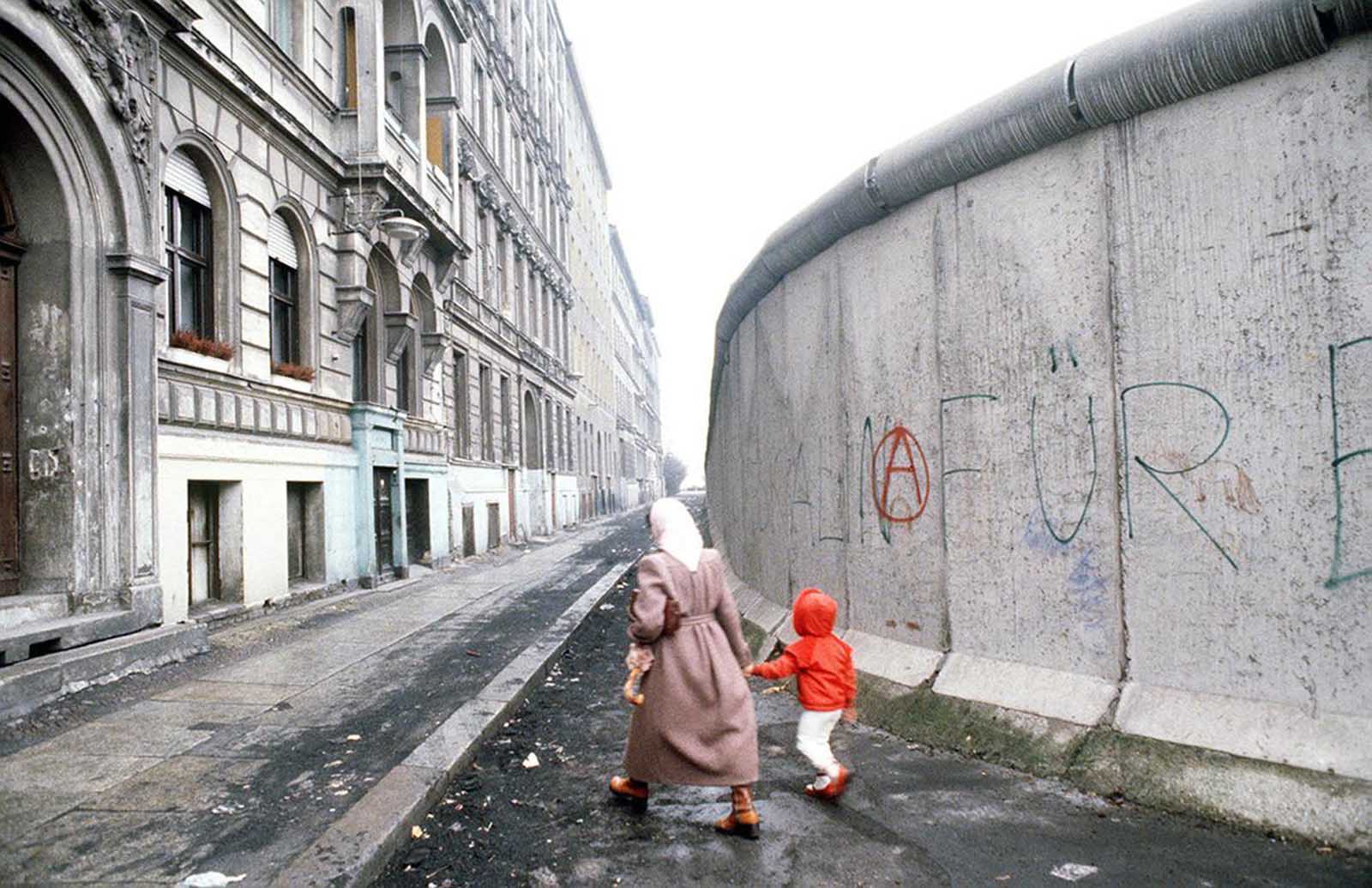
A woman and child walk beside a section of the Berlin Wall.

Reverend Martin Luther King, American civil rights leader, invited to Berlin by West Berlin Mayor Willy Brandt, visits the wall on September 13, 1964, at the border Potsdamer Platz in West Berlin.

A mass escape of 57 people in October 1964 from East Berlin through a tunnel to the cellar of a former bakery in “Bernauer Street”, West Berlin. Picture of the tunnel exit.

A graffiti-covered section of the wall close to the Brandenburg Gate in Berlin in 1988. Sign reads: “Attention! You are now leaving West Berlin”
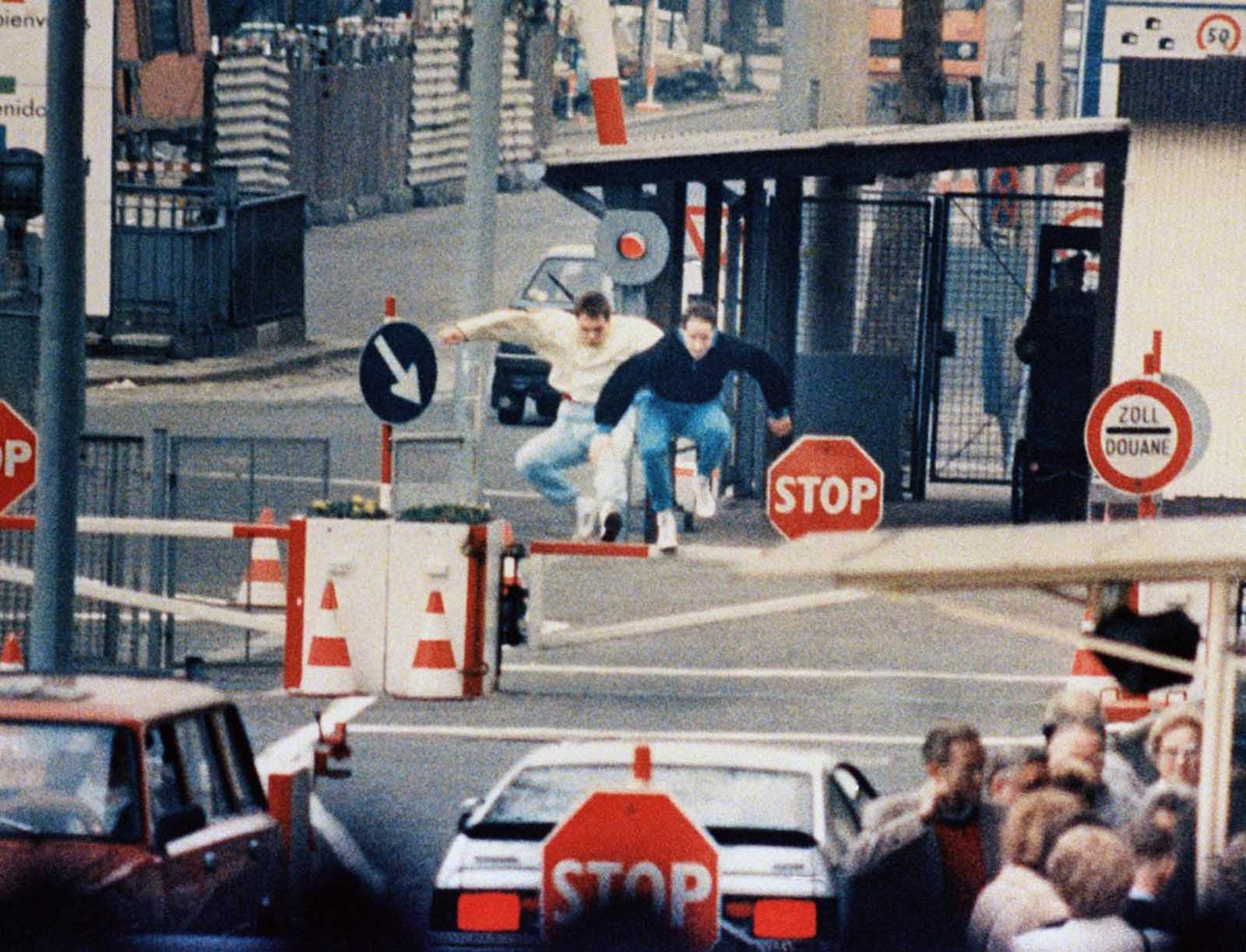
(1 of 3) Two East Berliners jump across border barriers on the Eastern side of border checkpoint at Chaussee Street in Berlin in April of 1989. They were stopped by gun wielding East German border guards and arrested while trying to escape into West Berlin. People in the foreground, still in East Berlin, wait for permits to visit the West.

(2 von 3) Zwei Ostberliner Flüchtlinge werden nach einem vereitelten Fluchtversuch am Berliner Grenzübergang Chausseestraße von Grenzbeamten abgeführt, auf diesem Bild vom April 1989.
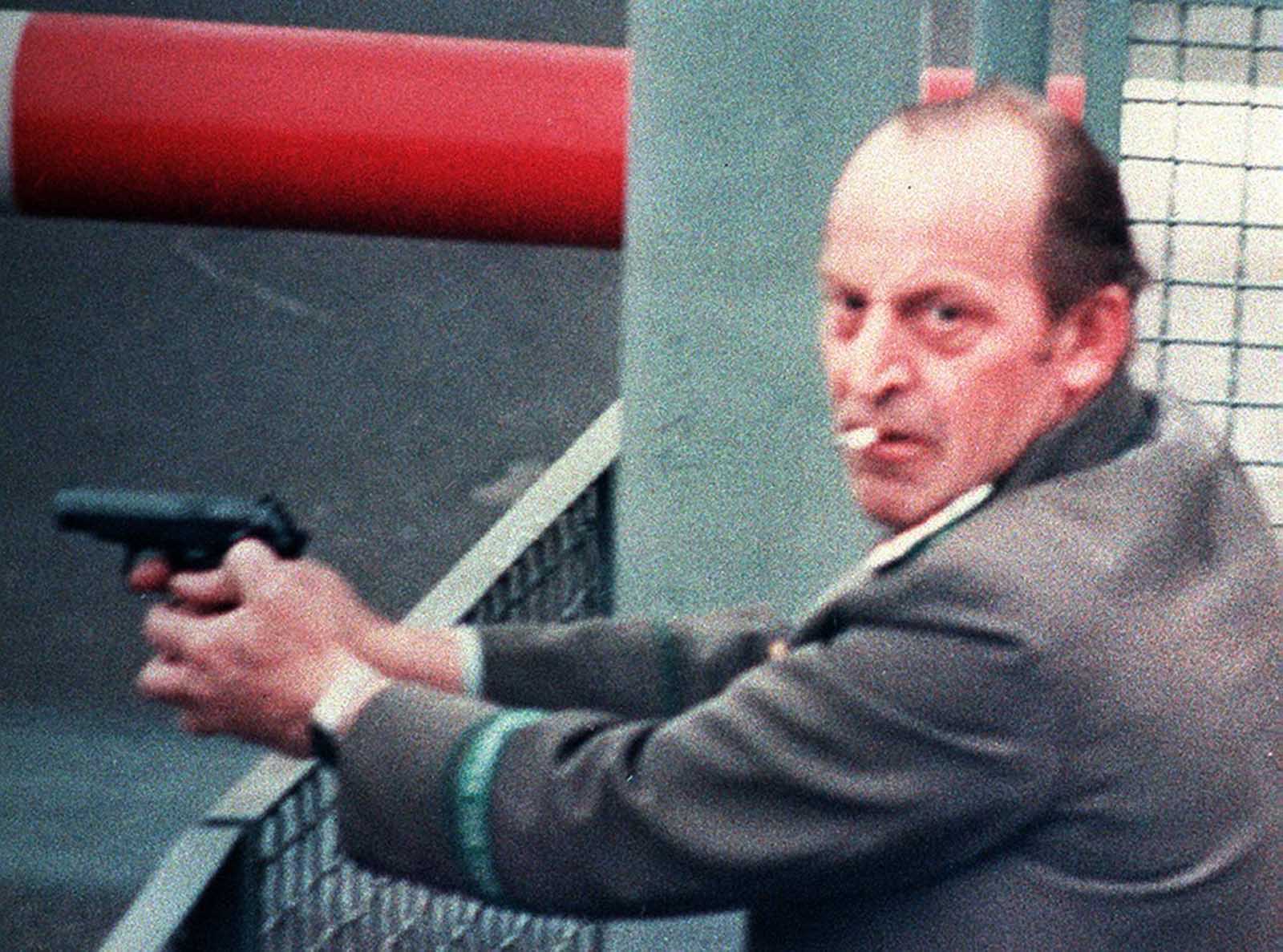
(3 von 3) Ein Ostberliner Grenzsoldat richtet mit einer Zigarette im Mund seine Pistole auf den Ort, an dem zwei Ostdeutsche abgeführt werden, denen die Flucht in den Westen am Berliner Grenzübergang Chausseestraße misslungen ist. Augenzeugen berichten, der Grenzsoldat habe auch Schüsse abgefeuert.

Ein Blick auf die überfüllte Ostberliner Gethsemanekirche am 12. Oktober 1989. Etwa 1.000 Ostdeutsche nahmen hier an einem Gebetsgottesdienst für inhaftierte Demokratiedemonstranten teil. Die Kirche war in den letzten Tagen der Mauer Mittelpunkt der Proteste.

Ein nicht identifizierter ostdeutscher Grenzsoldat gestikuliert in Richtung einiger Demonstranten, die am 7. Oktober 1989 am Grenzübergang Checkpoint Charlie Flaschen auf die Ostseite der neu errichteten Barrieren warfen.

Ost- und Westberliner feiern am 10. November 1989 vor einer Kontrollstation auf Ostberliner Gebiet die Öffnung der Grenzen zum Westen, nachdem die ostdeutsche Regierung die Öffnung der Grenze zum Westen angekündigt hatte.

Ost-Berliner erhalten helfende Hände von West-Berlinern beim Überklettern der Berliner Mauer, die die Stadt jahrzehntelang teilte, in der Nähe des Brandenburger Tors am 10. November 1989.

Ein Mann hämmert am 12. November 1989 auf die Berliner Mauer ein, als die Grenzanlage zwischen Ost- und Westdeutschland abgerissen wurde.

Am frühen Morgen des 11. November 1989 drängen sich West-Berliner vor der Berliner Mauer und beobachten, wie ostdeutsche Grenzsoldaten einen Teil der Mauer abreißen, um in der Nähe des Potsdamer Platzes einen neuen Grenzübergang zwischen Ost- und West-Berlin zu eröffnen.
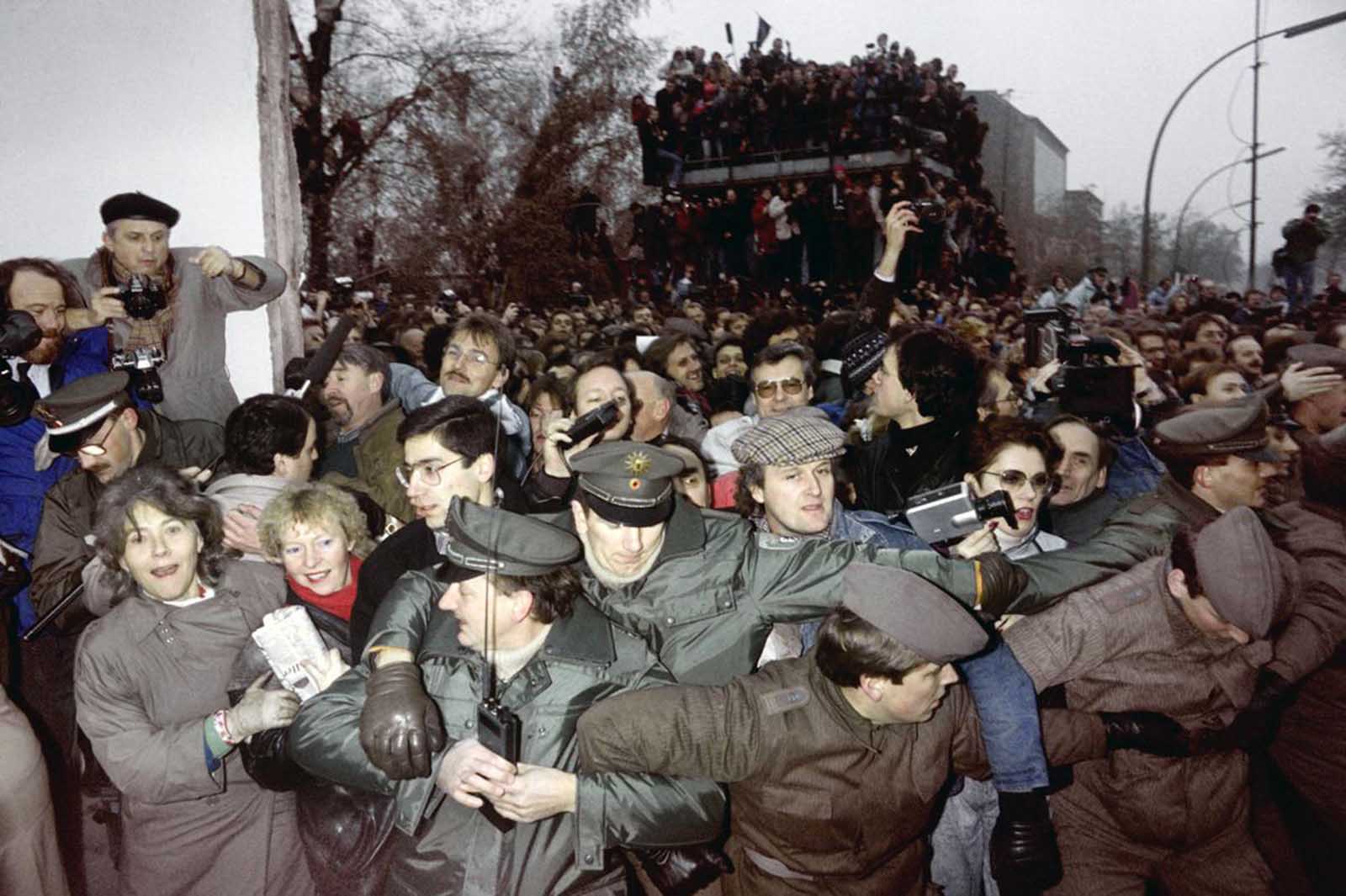
Ost- und westdeutsche Polizei versuchen, die Menge Ostberliners unter Kontrolle zu halten, die am 12. November 1989 durch die kürzlich geöffnete Öffnung der Berliner Mauer am Potsdamer Platz strömt.

Jahrzehnte später ist die Berliner Mauer nur noch eine Erinnerung, Teile davon sind über die ganze Welt verstreut. Hier werden einige Originalteile der Mauer am 8. November 2013 in der Stadt Teltow bei Berlin zum Verkauf angeboten.
(Bildnachweis: AP / Getty Images / /Library of Congress / Text: Jennifer Rosenberg ).
